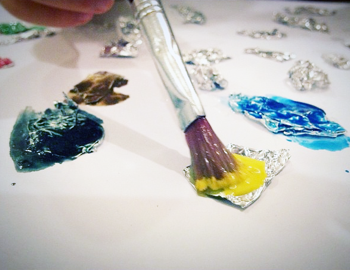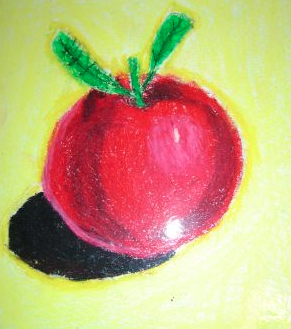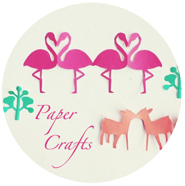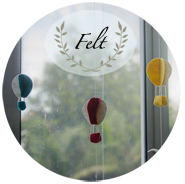
Out of curiosity, I walked into an art school with K on Saturday.
I never really had the intention of signing K up for an art lesson, it was just an attempt to see if the art classes offered from this school was worth sending a child to. The trial was after all free, so the cheap mom in me grabbed the opportunity for K to experience a short session and to evaluate the programme.
The boy was very enthusiastic and gamed to attend the trial, since he tend to enjoy doing those paint art craft activities in those malls, and thought that this was something similar.
Before K entered the class, I asked the lady at the counter area a whole host of questions;
Me : Can I know how are the lessons conducted?
Lady : We will show you the final product after the class so that you can decide if the programme is suitable for your child.
Me : Arhh.. isn’t art more about the process and not the product?
(After reading those early childhood art development books from Susan Striker and attempting many art activities with K from some of Mary Ann Kohl books. Hearing this words from her sounded the alarm bells in my head, especially when I am so influenced by these authors that art is ‘the process and not the product that matters’, when it comes to teaching art to young children).
Lady : (she looked quizzically at my comment)
Me : Oh ok, what I meant was, what is the structure of the lesson like? What are the children taught and how does the teacher teach them?
Lady : Oh 30 minutes, we will let the children do free hand drawing. Then the next 30 minutes of the class the child will do this activity.
The lady behind the counter showed me a A4 printer paper that was divided into half, the top part of the paper showed a black-line drawing of an apple, and the bottom half was blank.
Lady : The child will be asked to draw this apple, and use oil pastels to color the picture. Afterwards, the teacher will guide the child to teach some techniques of blending, just like these pictures you see on the wall. (She pointed to the colored creations pasted on the studio’s wall that were done by the other students)
Me : So what exactly does a child learn in foundation class, and then after that, what do they learn when they progress to the higher levels?
Lady : Foundation course is for kids between 4-6, where they will do tracing, follow the dotted lines in the picture, and then color in the picture with the blending methods that the teacher will teach. Then after that, when the teacher thinks that the child is ready, we will move the child to Level 1. They will learn composition, layering, and the gradation of colors. See this picture (she pointed to another set of pictures, with a consistent Orange in the middle of the picture, and the rest of the pictures was filled with the children’s own drawings). These pictures are from Level 1 and 2, the child will be given a picture with a line drawing of a orange, while the rest of the picture is blank. The child can fill in the picture with their own drawings and then blend the colors on the picture.
Right after 45 minutes, Kyle emerged from the class, and the lady behind the counter showed me his ‘product’ from the class. I was not able to show the picture on this blog (they are probably afraid of people like me, who will do this…heh). And what I saw was a nicely blended picture (right to left – dark red to lighter red, in 3 gradated shades) of the apple on top, and Kyle’s self-drawn and colored purple apple at the bottom of the paper.
Well, I squirmed myself out of not signing up for the classes, by telling the lady behind the counter that I am still evaluating which art school to send Kyle to.
I think if a child attends the class, they might eventually reach this stage of being able to blend an apple, or any other thing very nicely.

Just a random picture of an oil pastel blended apple from google
I told hb that the experience was quite a disappointment, and his remarks were, “It is only $35.00 per class, what do you expect? Blending is after all still an art technique to teach the young ones. This is a supervised activity of sorts for the young children, you can’t expect the teacher to be passing down the technical details of art in that 30 minutes per lesson to the child. I hope you are not expecting that the teachers are art graduates or NAFA trained? Art is like how it has been in ancient times, children go under the tutelage of famous artists, who all then hand down their expertise. Teaching art needs a lot more time and effort on the part of the teacher.
I did not quite agree with the part about being an artist to teach a child art. I am not an artist, but I think using the right techniques + with the help of books, guiding K over time to build his creativity and interest for art is possible. I have after all taught myself to sew and to craft, and I think that can be considered another kind of art form.
So, I walked straight to the bookshop right after K’s trial session, to buy a box of 50 oil pastels for K.
Next up, art lessons home-learning style!
See this youtube video for quick tips on blending with oil pastels
See this previous post on picture books about art and creativity.
And here is a great article from Sarah of The Playful Parents on introducing the concept of geometric shapes in art, as shape is a foundational concept in teaching a child art.




















“art more about the process and not the product”
Totally agree.
And regarding the replies – the lady seems rather ‘vague'(?) about the actual methods used and lesson proper. I wouldn’t be convinced either, and perhaps in your position would actually doubt the lessons simply based on her ‘explanation’ (or lack of it) alone!
My husband would say the exact same thing that Keith did – but I would be of the opinion that regardless of whether we pay $35 or $350… there must be proper procedures and practices in order to classify it as an art class.
I remember I used to go to art classes growing up. It was held at a Tiong Bahru flat by an ex art teacher. I loved those classes… and I was thought to use oil pastels and water colours first, before proceeding to be taught on how to ‘blend’ using pencils for still life drawings. It cost $40 per lesson, in those days it was a lot of money – but my mum still encouraged me to, seeing that I loved it so much and it was the highlight of the week.
I would always encourage Caden in whatever his interests are in the future – and I can totally understand your take on this.
Regina´s last blog post ..Wordless Wednesday: Because I hope to still make him smile the same way for as long as we are together.
Rachel Reply:
April 26th, 2012 at 8:48 pm
I guess these days all these art classes function a lot as activity centers to keep the kids busy, while parents run their errands in the malls. Explains why so many of them are located in malls these days. I guess my expectations were too high, but really looking at how we were taught art while we were growing up, I can’t help but feel that they can do a lot more to teach the kids.
Thanks Rachel! I am not good in Art neither nor I know what to expect. After reading your post, it really make me look more deeply into the meaning of creating an art piece. You must have put lots of effort into learning. Interesting point! Art is about a process not the result. I agree.
Rachel Reply:
April 26th, 2012 at 8:49 pm
I try to make that effort to get K to enjoy the process of learning. It does get very challenging at times but when I see him respond so positively to the curriculum or activities that I plan for him, it makes this learning journey with him a lot more fun and encouraging.
I agree that art is never just the finished product, more important than a well-blended, composed or life-like drawings, I personally believe that art should always be creativity driven and it is most definitely a self-expression…
Children should never be led to believe that art is art only when it’s done or “perfected” in a certain way…
Rachel Reply:
April 26th, 2012 at 8:51 pm
Yes, that I guess it is a societal problem we have in Singapore. Everything is about the product, or the results, even something in the creative arena like art. And also there is this stigma, that most parents do not see the point of their children becoming artists, as it is a poor person’s career, if it can even be a career to start with.
Thanks for linking up to my article! I really love what you’ve written here. And that excerpt of the conversation you had with the art school lady? All too familiar!
Why is it that art, like so many things else here, has to have a ‘product’ before it can be validated as worthy of a pursuit? Just like play, drama, music. Can’t these things that are so fundamental to our human psyche just be important because our creative beings need them and we enjoy them?
Another thing that I feel many of us parents, and as art educators, often need to remember is that children don’t have as many ‘baggages’ and ‘expectations’ as we adults do. So like Susan Striker in her book ‘ Young at Art’ says, our children are not driven or motivated to do art because they have that need to express something, but rather by the potential of the art media they have in their hands. (Of course, art therapy does have its place with children.)
I did write a little more about this process art VS product-driven art in an earlier post on my blog: http://theplayfulparents.com/2012/04/wysiwig-wednesdays-getting-started-with-coffee-filter-art/
Am looking forward to reading and learning more ideas from you!
Rachel Reply:
April 26th, 2012 at 8:55 pm
All these pre-conceived notions about art and creativity is all due to a meritocratic society here. Why is it tat so few of us were able to pursue a career in art, even if we have shown some potential in it while growing up. Parents’ mindset haven’t really changed since our parents’ time, when it comes to areas of the arts, most still want to see results from it…and people are not considered artists until their paintings or works of art can be sold for a good price. Everything is tied to making money and profit, so the true essence of expression and enjoyment loses its perspective in a society like this.
Hi Rachel, yes art and craft should be about the process and never the product. I do lots of simple crafts with my girl and we enjoy them so much every time. I just wish all parents would discover the fun in it and how it helps to bring out the creativity in their kids. Thanks for sharing this!
Summer´s last blog post ..All about love #2 – Feel the wordless love
Rachel Reply:
April 26th, 2012 at 9:00 pm
U are welcome Summer. I will be sharing a lot more about our art journey here, and tips to teach children art.
Hmmm I did think of sending my girl to art classes too but her daddy said, “aiya why bother? She got no talent one la!” -_- so I didn’t because she’s still young and not because of what he said! Most likely will take her when she’s around 3 and then take some classes of my own too! 😉
Madeline´s last blog post ..The Most Expensive Piece of Steak
Rachel Reply:
April 26th, 2012 at 9:01 pm
Your hb’s comment is so funny. Your little one may just surprise him with talent, even no talent, u can also nurture her creativity and interest towards art. Don’t need classes to teach her, have a look at the next post that I posted on the book that you can learn from to teach your little one art, it is a fabulous book!
Hi Rachel, I follow MyPlayschool’s FB page and stumbled upon your post a while ago on your review of HeART studio, which then led me to this blog. Judging from the response that the counter lady gave you, I already knew which art school it was that you had gone for the trial above, lol! Because I also did my research, online and by word-of-mouth, and then by calling up various art schools. This art school above has lots of branches and lots of students and some of relatives and friends have sent their kids there and think highly of the school. But I was gravely disappointed when I saw the students’ portfolio and class synopses posted on their website.
To me, there was no creativity and freedom of expression and exploration encouraged in the children. It was just technical coaching, to churn out uniformly-looking art pieces through the same blending/tracing/colouring exercises lesson after lesson. It felt like a type of rote learning. I felt that the school’s prescribed methodology was such an abomination of ‘art’ itself and very stifling actually. But as my husband pointed out, maybe that is what a lot of parents locally want for their children or think art classes should be. My subsequent teleconversation with the school’s reception staff confirmed that as much as their methodology could churn out so-called competition-winning young artists, it didn’t align with my personal belief of what art education for young children should be about, which is also more process-focused rather than product-driven.
Not sure if you had come across Wow Art Studio (http://studio.wow.com.sg/) in your search, but the three full-time teachers currently at HeART Studio were all formerly staff of Wow Art Studio before they joined HeART. My 3yo has been taking his art classes at Wow Art for 1.5 terms already. The art pedagogy and philosophy at HeART Studio is largely owed to the philsophy towards art education by pioneered by the founders of Wow Art Studio and the teachers’ experience there. You might want to check out Wow Art as well.